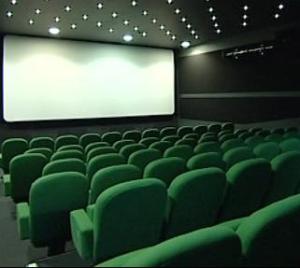
by Rich Mesch
Storytelling is one of the most effective yet underused methods for enhancing adult learning. Ever heard someone yell at characters on a movie screen or talk back to the television? Ever stay up way too late one night because you had to read just one more chapter of a best seller? Ever rearrange your schedule to make sure you’re home for the conclusion of the cliffhanger episode of your favorite TV series?
Odds are good that you answered “yes” to at least one of the questions above, and very possibly to all of them. It’s not surprising. For many cultures, storytelling is one of the most pervasive methods of sharing information. A good story speaks to our minds, our hearts, our deepest emotions. When we’re truly wrapped up in a great story, we sometimes do things that are irrational; we speak to characters we know are fictional, we give up sleep that we desperately need, we laugh or cry or rejoice or despair over the lives of people we know are completely made up, completely fabricated. We’re human beings; we are able to connect on many levels.
We hate to admit it, but the workplace is irrationally emotional as well. On a good workday, we can feel fear, anger, joy, despair and elation. But for some reason, when we train people to be effective in this environment, our approach too often becomes dry and bloodless. We engage the mind (if we’re lucky), but not the heart. As a result, we reduce the likelihood that we will gain learner attention, that our message will be heard, let alone retained and applied.
I’ve been fortunate to spend most of my career working on performance simulations. The word “simulation” means many different things to different people. But at its core, simulations provide a realistic environment for learners to try new behaviors and experience the likely outcomes. And this is where storytelling becomes critical. If I’m going to truly apply new behaviors, I need to feel the same pressures, trade-offs, and barriers to change that I will feel in the real world. If those aspects are not present, I’m likely to dismiss the whole enterprise as “just another training exercise.” There are good simulations and bad simulations (and really bad simulations that don’t simulate anything). Some interpret simulation as a complex multiple choice test, which isn’t even close. Ultimately, what raises a mediocre simulation to a great simulation is the ability of the designers to engage the learner with a compelling story.
Novels, movies, and TV may be more appropriate metaphors for adult learning than classrooms are. The key factor is immersion; an experience that takes you out of the here-and-now and fully involves you in another environment. When people care about how the story turns out, they will start making decisions based on their internal assumptions; they will start getting distracted from the textbook “right” way and start making decisions emotionally, like they do in real life. This creates an opportunity for not just learning, but real behavior change—by allowing you to examine what drives your behavior in the first place.
So how do you apply some of the rules of storytelling to our training initiatives? The key is to focus on how the world works in real life. There’s tons of good leadership content out there, and most of it is not hard to understand. So why is there such a shortage of good leaders? Because when someone actually tries to apply this stuff, they meet challenges, encounter resistance, and need to change the way processes and systems work. Although they may agree that this is the “right stuff,” they don’t do it, because the risk and effort of doing it “right” outweighs the potential consequences of doing it “wrong.” Your story needs to address that. The same constraints and pressures that make your content difficult to implement in the real world need to exist in your training solution. Otherwise, your users will recognize it as a work of fiction, separate and divorced from the real world. Nobody can consider how to overcome the barriers to success until they comprehend what the barriers to success actually look like.
In the next post in this series, we'll review 7 key tips to using storytelling in your learning. See you there!


